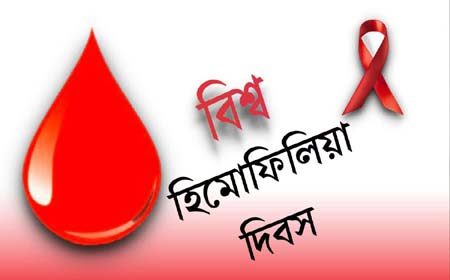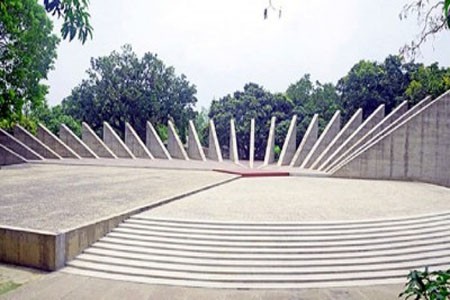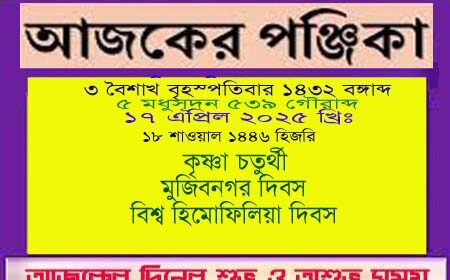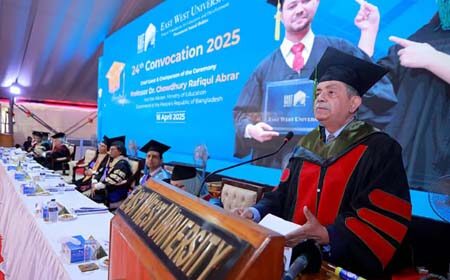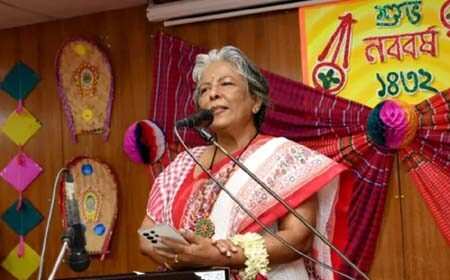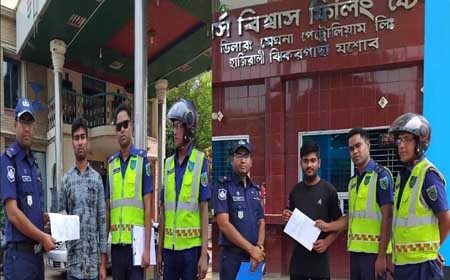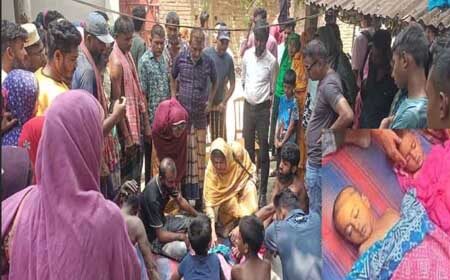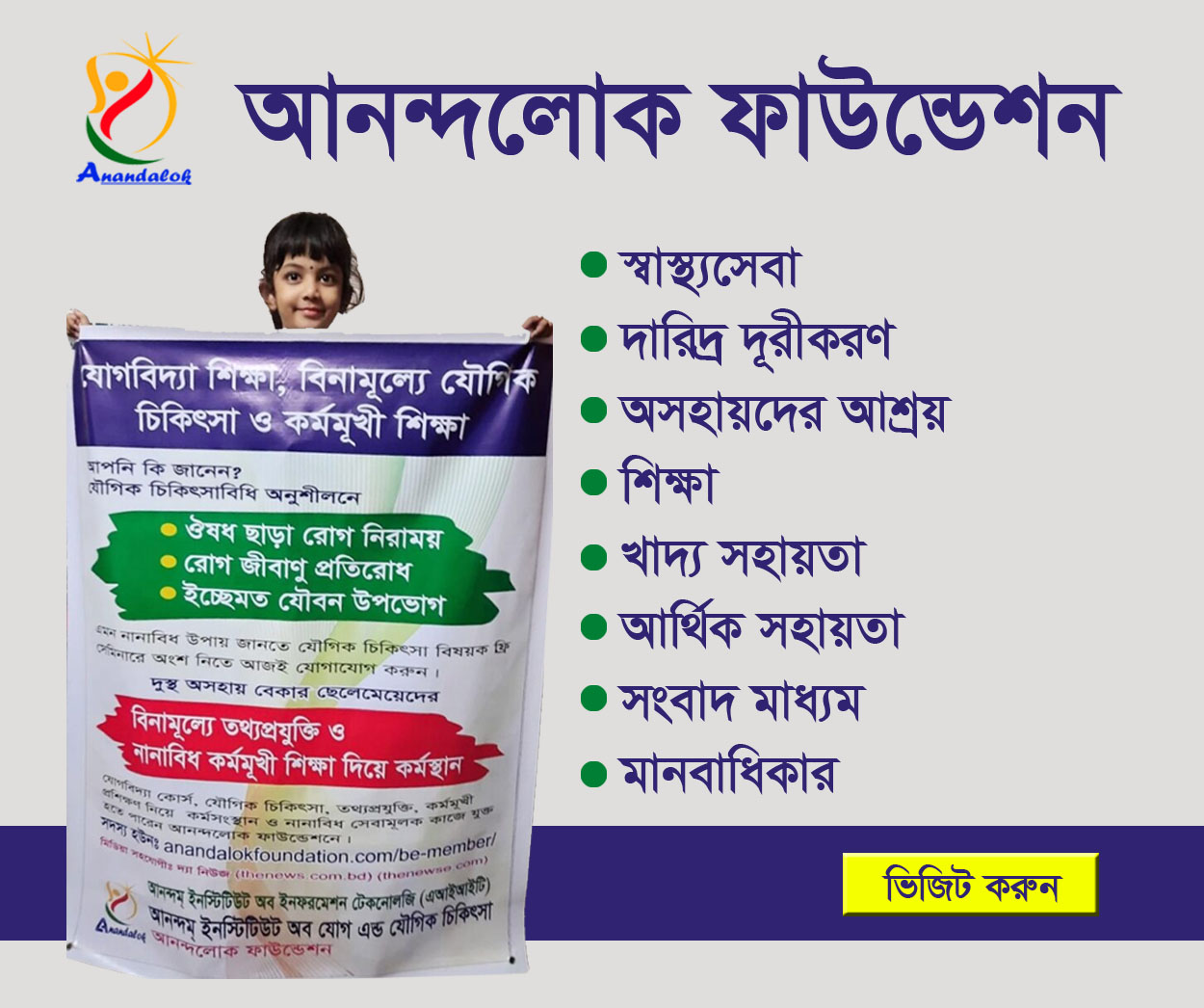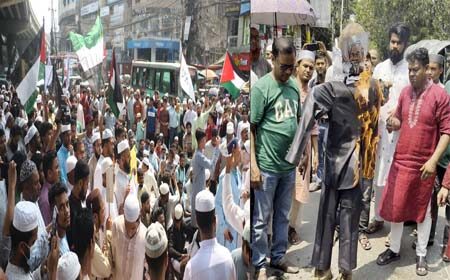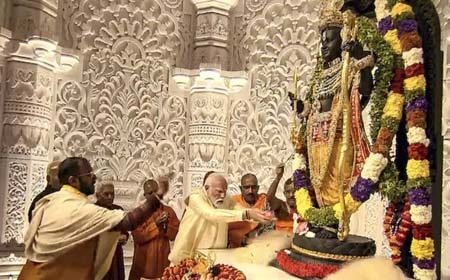When security forces break a Closed Circuit (CC) camera and enter someone’s home or business, the intention of that operation will obviously be questioned. This is exactly what happened at Hazari Lane, a Hindu-dominated area in Chattogram. The Army and Police, along with a group of Islamists, attacked Hindu homes and businesses at night, cordoning off the entire area. How many were wounded or killed? Nobody knows for sure, as no media was courageous enough to report the incident. But the cries of the Hindus of Hazari Lane, as well as those in the rest of Bangladesh, will not stop until the culprits are brought to justice. Will that happen? It hasn’t happened in the past, and given the circumstances, there is little hope it will happen now. Why? Because in a Muslim-majority country like Bangladesh, nobody cares if Hindus or other religious minorities are persecuted or victimized.
It was Tuesday, 5th November 2024. On the following day, the army held a press conference the following day, claiming that acid had been thrown at them, though no sufficient evidence was provided. The security forces reported the arrest of 89 Hindus, accusing them of involvement in the incident. Meanwhile, a member of the Muslim community voiced concern, comparing the security forces’ actions in Hazari Lane to the treatment of the Rohingyas in Myanmar [1]. He also urged the government to engage in discussions with the Hindu community regarding their eight-point demands, which include calls for justice related to attacks on religious and ethnic minorities and the enactment of laws to protect their rights.
On Friday, November 8th, following the Jumma prayer, a large procession led by militant Muslim groups took place in Chittagong. Participants openly chanted slogans such as, “Catch an ISKCON/Hindu, slit their throat.[2]” ISKCON (The International Society for Krishna Consciousness) is a religious organization that promotes non-violence and spiritual practices based on the ancient Gaudiya-Vaishnava tradition of Bengal. A coordinated campaign by Ilias Hossain from the USA, Pinaki Bhattacharya from France, and journalist Mahbubur Rahman in Dhaka has sought to demonize ISKCON and incite violence against the organization and Hindus in general. On November 6th, Charu Krishna Das, secretary of ISKCON Bangladesh, issued a statement affirming the organization’s non-political stance and denying any involvement with the movement [3].
Despite the inflammatory nature of the statements by the militant groups, police made no arrests in connection with the incident.
The Army stated that they remained neutral during the operation, but major questions remain unanswered: “Why were the CC cameras disabled before the operation?” and “Why were civilian cadres involved alongside security forces?” [4]
We spoke with two eyewitnesses who were afraid to publish their names. They reported that 57 Hindus were injured. Initially, police detained about 200 Hindus, taking them to a nearby temporary military camp and keeping them isolated. Later, around 100 people were released. Police filed a case against 89 individuals, who were presented before a judge at 1 a.m. to avoid public attention. Eyewitnesses stated that the detainees had visible scars from torture, with some unable to stand in court. The witnesses also reported that they knew nothing about any “acid throwing,” but they did observe stone pelting.
Earlier, it was reported that a Muslim man, Osman Mollah, posted something against ISKCON on social media, prompting protests from the Hindu community. Local Hindu and Muslim shop owners mediated the incident, and Osman issued a written apology, resolving the matter. However, militant groups were dissatisfied with this outcome and sought to punish the Hindus, who were organizing large protests. That night, militant Islamists, accompanied by police and military forces, launched an attack, looting 15–20 gold stores. Most of those arrested were innocent. Police identified businessmen like Rubel Saha, Amit Dhar, and Dr. Kathak Das, who had no involvement, likely to extort ransom from them.
Eyewitnesses reported seeing two factions within the security forces—one entirely anti-Hindu and another opposed to the raid on Hindu homes and businesses. They also stated that Hizbut Tahrir and Jamaat cadres joined the security forces and carried out most of the looting.
They further reported that security forces continue to raid Hindu homes. A young woman, Aradhya Saha, filed a complaint with human rights defenders, stating that she was home alone when security forces and Jamaat supporters entered and ransacked her house. Police have also continued to raid the homes of activists involved in the movement. A team from The Human Rights Congress for Bangladesh Minorities (HRCBM), consisting of Sumon Sikder, Laki Bacher, and Sujit Das, met with the local police commissioner but received no satisfactory responses.
According to sources, police questioned detainees about a so-called RSS flag allegedly displayed above the Bangladesh flag. In reality, it was a saffron flag commonly used by Hindus, and the other flag was not a Bangladesh flag. Police also stated that they had never before seen so many Hindus taking to the streets, asking whether India was supporting them. They questioned why the slogan “Jai Shri Ram” was used, viewing it as an RSS slogan. However, “Ram” and “Krishna” are two incarnations of God, and “Jai Shri Ram” and “Hare Krishna” are common phrases among Hindus. Reliable sources reported that an army team from Dhaka would soon visit Chittagong to arrest members of the Bangladesh Hindu Jagoron Moncho involved in the movement. Police filed a case against Hindus, listing 49 arrested individuals and 500 unknown persons. The military may add to this list of 500. The main leader, Chinmoy Krishna Das, is also at risk of arrest. BNP leaders are trying to support Hindus and have requested Chinmoy Das to pause the movement, prompting him to declare a 15-day break.
The Chittagong Hill Tracts, a news portal, reported on November 7th that, since the evening of November 5, 2024, the Bangladesh Army, along with Border Guards Bangladesh (BGB) and local police, had launched a violent, targeted crackdown on Hindu-majority areas in Chattogram [5]. Reports from victims and eyewitnesses in the region indicate that heavily armed soldiers, backed by paramilitary forces and police, have conducted door-to-door raids in Hindu neighborhoods, including Hazarigolli and surrounding areas. Security forces are accused of forcibly entering homes, rounding up all male residents, and taking them into custody under unclear circumstances. In a disturbing escalation, several reports claim that security personnel also destroyed CCTV cameras to prevent documentation of these actions.
The Global Bangladeshi Hindu Alliance alerted the world that “more than 80 Hindus were picked up at midnight as army and police surrounded the Hindu neighborhood of Hazari Lane in Chittagong.” They reported that security forces ransacked homes and shops, destroying CCTV cameras to eliminate evidence, and beat Hindus mercilessly—women, children, and elderly alike. Many were severely injured. They also alleged that security forces tortured detainees during interrogation and warned that the Hindus would be charged under the non-bailable “Acid Throwing Act of 2002,” carrying a potential death penalty. Hindus are comparing the Hazari Lane raid to the infamous “Black Night” of March 25, 1971, when the Pakistani army massacred Bengalis. Questions have been raised: “Are Hindus safe in the hands of the Army?” “Is this the Bangladeshi army or a Pakistani army?” and “Are these army and police officers part of the UN Peacekeeping Mission?”



